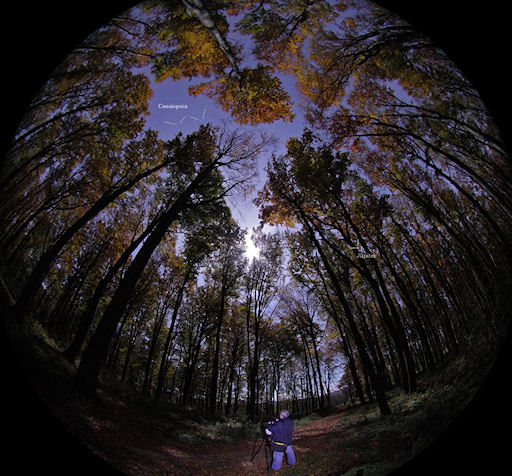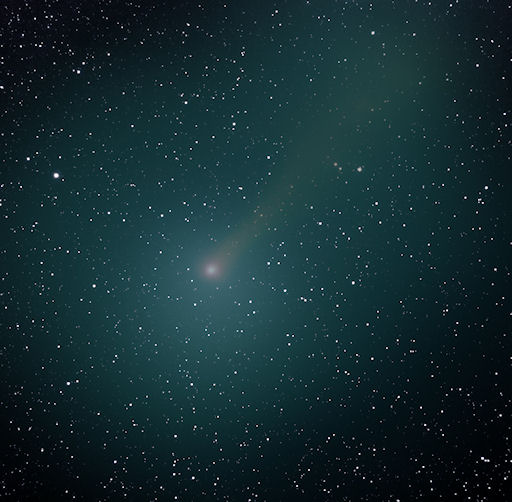AURORA ALERTS: Did you miss the Northern Lights? Next time get a wake-up call from Space Weather PHONE | | |
AURORA ALERT: High-latitude sky watchers should be alert for auroras. A high-speed solar wind stream is buffeting Earth's magnetic field and causing polar geomagnetic storms.
THE SURPRISING CONTENTS OF LUNAR CRATERS: Nearly a year after announcing the discovery of water molecules on the moon, scientists say there's more than just water hiding in cold lunar craters. Get the full story from Science@NASA.
FULL MOONLIGHT: It tramples meteors, overwhelms auroras, and wipes out all but the brightest stars. But the full Moon isn't all bad. Just look at the landscape:

Photo details: Canon 500D, Sigma fisheye lens, ISO 1600, 15 sec, f/4.5
"Last night's full Moon cast a bright light over this colourful autumnal forest in the Bakony mountains of Hungary," says photographer Tamas Ladanyi. "It was almost like daylight."
Meanwhile in Vira Bruk, Sweden, photographer P-M Hedén turned his attention to a moonlit waterfall. "There was a time when I didn't like the full Moon because it prevented me from doing any deep-sky photography. Now I really enjoy walking around the moonlit landscape and doing lunarlight photography instead."
more images: from Tavi Greiner of Shallotte, North Carolina; from Lisa LaCivita of Stephens City, Virginia; from Monika Landy-Gyebnar of Veszprem, Hungary; from Ken Scott of Leelanau County, Michigan
COMET HARTLEY 2: To the list of things that defy moonlight, such as trees and waterfalls, add Comet Hartley 2. Amateur astronomer Nick Howes took this picture on Oct. 22nd using a robotic 4-inch telescope in Hawaii:

"Photography is difficult due to the Moon, but with narrowband filters the comet stands out quite nicely," he says. "The tail is now very well defined, and stands in beautiful contrast to the diffuse green coma. This was a 15 minute exposure."
Astronomers who wish to monitor this small but active comet should point their optics at the constellation Auriga high in the northern sky before dawn. Moonlight will make finding the comet a little tricky. On the bright side, reading the finder chart will be a breeze!
more images: from Rolando Ligustri using a robotic telescope in New Mexico; from Efrain Morales Rivera of Aguadilla, Puerto Rico; from Tamás Ábrahám of Zsámbék, Hungary;
October 2010 Aurora Gallery
[previous Octobers: 2009, 2008, 2007, 2006, 2004, 2003, 2002, 2001]
Potentially Hazardous Asteroids (
PHAs) are space rocks larger than approximately 100m that can come closer to Earth than 0.05 AU. None of the known PHAs is on a collision course with our planet, although astronomers are finding
new ones all the time.
On October 23, 2010 there were 1155 potentially hazardous asteroids.
Notes: LD means "Lunar Distance." 1 LD = 384,401 km, the distance between Earth and the Moon. 1 LD also equals 0.00256 AU. MAG is the visual magnitude of the asteroid on the date of closest approach. | | The official U.S. government space weather bureau |
| | The first place to look for information about sundogs, pillars, rainbows and related phenomena. |
| | Researchers call it a "Hubble for the sun." SDO is the most advanced solar observatory ever. |
| | 3D views of the sun from NASA's Solar and Terrestrial Relations Observatory |
| | Realtime and archival images of the Sun from SOHO. |
| | from the NOAA Space Environment Center |
| | the underlying science of space weather |

